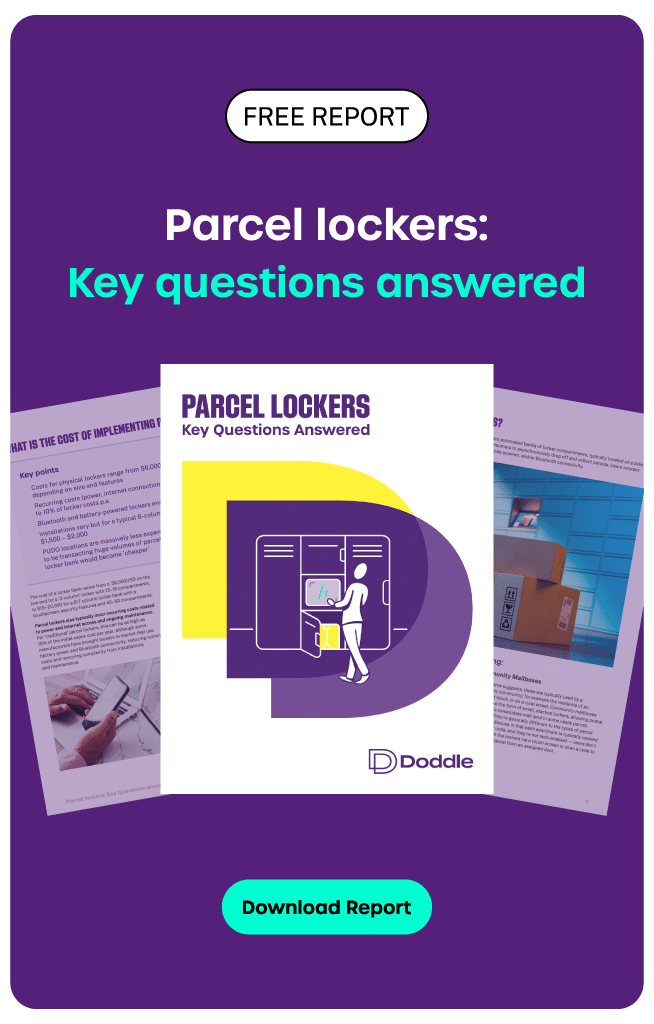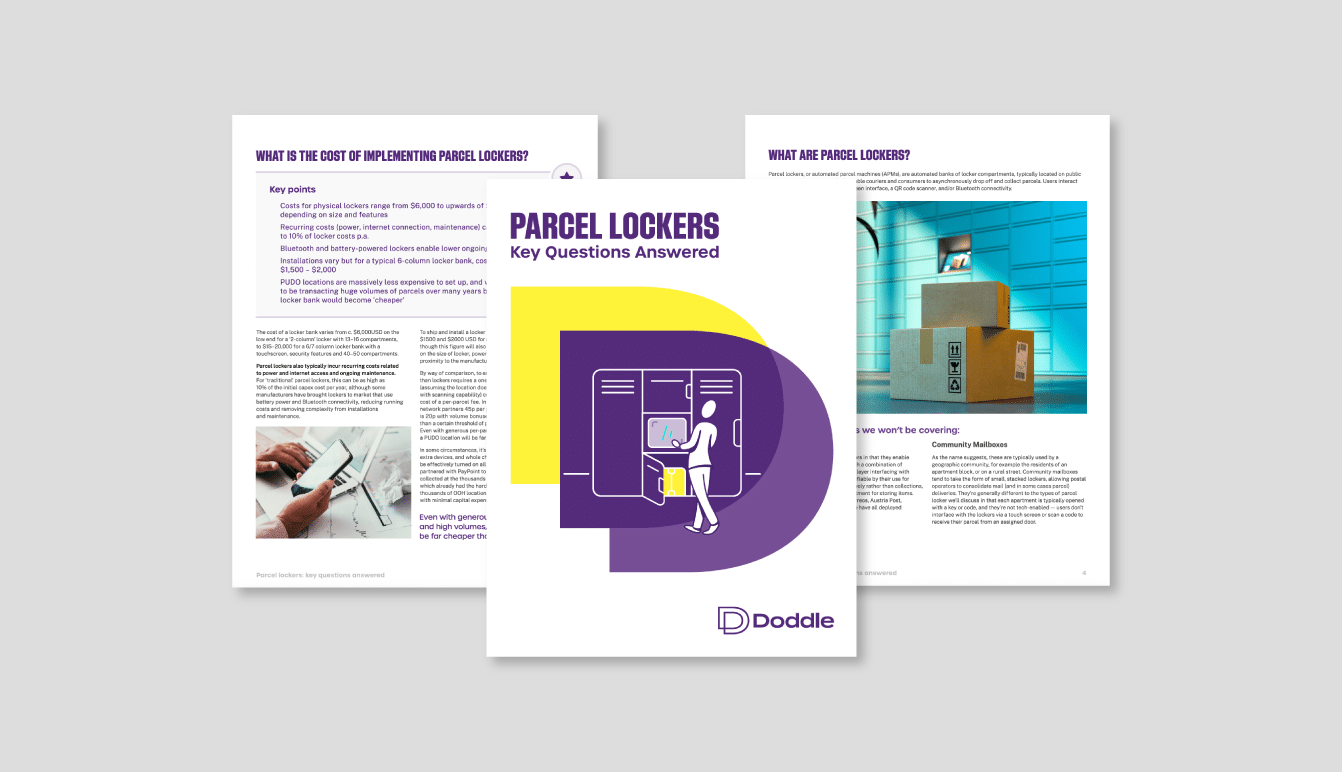Insight / Blog
InPost’s Changed PUDO Strategy

Summary: InPost has launched a UK PUDO network, highlighting its new attitude to PUDO as part of its expansion plans.
InPost’s new pickup and dropoff (PUDO) network launch in the UK comes on the heels of its latest financial reports highlighting that it has almost as many PUDO locations as lockers (just under 30,000 of each). Both point to a shift in InPost’s strategy over the past two years as its international growth has accelerated, embracing the power and value of PUDO to scale an out-of-home delivery and returns network at far lower costs than APMs (Automated Parcel Machines, a.k.a. parcel lockers) can offer.
A new UK PUDO network, and a new ambition
Having been piloted with Vinted, InPost has now announced its “InPost Shop” service is available for would-be host location partners. On its site, there’s a clear emphasis that this is for locations “without outdoor space” to install a locker, and InPost International CEO Michael Rouse begins his comment on the news by insisting that “we will always be a locker-first company”. But the key lines are about growth and InPost’s goal in the UK.
Michael Rouse, CEO, InPost International“…it enables us to accelerate our network capacity to capture further demand for InPost’s services… This marks an important milestone in our mission to become the UK’s largest OOH provider.”
The blanket term OOH (out-of-home) is revealing. Not the UK’s largest locker provider, but the UK’s largest OOH provider: tacitly admitting what the strategy itself shows, that PUDO is a powerful tool to scale and develop an out-of-home network.
InPost’s intentions and our analysis in 2021
Two and a half years ago, as news broke of InPost’s acquisition of Mondial Relay, we wondered whether it was right to pursue a strategy of acquiring PUDO networks and then automating them. Its IPO prospectus had made clear that this was the plan, saying that the business would “pursue selective acquisitions of out-of-home delivery networks and automating them through the development of a dense APM network”.
The suggestion was that InPost was doubling down on lockers as the out-of-home format of choice, aiming to convert at least some of Mondial Relay’s human-powered PUDO locations into locker sites. The acquisition alone cost InPost around half a billion euro, so automating the PUDO locations sounded like a really bold plan, one that would have required even more capital expenditure to realise. As we wrote at the time, it seemed like InPost might not have seen the full value of PUDO as an out-of-home delivery format, if its plan was to heavily automate the Mondial Relay network at great expense.
“Combining a PUDO network of post offices, third-party concessions and lockers appears to be the winning formula for the dominant, market-leading carriers in every major ecommerce market. It’s worth emphasising that the biggest UK carrier to have initially opened their last-mile OOH offering with lockers (Amazon Logistics) is now moving towards parcel shops and concessions, while carriers that have long held a huge network of post offices and parcel shops are now launching pilots and networks of locker banks.”
Fast forward to 2023, and it looks like InPost now agrees that a mixed network is the way to go, with the official announcement of a UK InPost-branded PUDO network, and its official reporting showing over 8,000 PUDO locations across Southern Europe in Spain, Portugal and Italy, in addition to its Mondial Relay inheritance in France and Benelux.
Why has InPost’s expansion strategy changed?
The biggest reason is that achieving the scale required to be the UK’s largest OOH operator with lockers alone would be immensely costly. Amazon has approximately 17,500 OOH locations, of which 8,000 are lockers, per the latest Last Mile Experts European OOH report. InPost currently has just over 5,000 UK lockers. At a rough estimate, 12,500 new APMs would cost at least ~£100m (and likely more).
One day, could InPost reach that many lockers in the UK? It’s not impossible if its expansion plans continue at this rate – it ploughed £216m into capital expenditure in 2022, after all. But those rough costs above are for production, not including siting, installation and ongoing operating costs, and don’t scale to account for the increasing challenge of locating new locker banks in cities and towns where the best spots are rapidly being snatched up.
So scaling lockers is expensive and challenging. On the other hand, as Amazon showed a few years ago, it’s relatively achievable to spin up a lot of PUDO locations in a short time period. At time of writing, InPost has gone public with the service without announcing a host partnership, whereas Amazon partnered extensively to scale its PUDO network, most notably with PayPoint, which already had a huge foothold in UK convenience stores. Without a flagship partner, scaling PUDO on a store-by-store basis will be harder, so we expect to hear something from InPost in the space before the year is out. Whoever InPost does or does not partner with, becoming the UK’s biggest OOH operator will be quicker and more cost-effective with PUDO than without.
Expanding the proposition, not just the network
Today, InPost UK is heavily focused on the drop-off side (both for returns and C2C drop-offs), in part because its locker coverage is largely limited to 3 major cities, so merchants see big gaps in its delivery coverage. It’s also not able to leverage a key locker benefit at the moment – the cost reductions of consolidated locker deliveries aren’t yet being passed on to merchants – because InPost isn’t a carrier in the UK, just a network.
But both these things are changing. Firstly, through its acquisition of a stake in Menzies Distribution (with the option to acquire the rest in time), InPost has the potential to bring an outbound delivery proposition to market that offers consolidated deliveries at a cheaper rate – in Poland, InPost’s locker deliveries are ~25% cheaper than home deliveries. Secondly, with a rapidly scaled PUDO network, InPost’s offer can go from being limited to major cities to a properly national proposition. Achieving that national scale and realising the improved unit economics of consolidated deliveries through a combined network of PUDOs and lockers could make InPost a real game changer in the UK B2C market.
Related articles
Lessons from a decade in the first and last mile
A decade as Doddle taught us some lessons - and Blue Yonder helps us see what will matter in the next decade.
Important lessons from Leaders in Logistics 2024
Leaders in Logistics 24 dived into AI & automation, sustainability, changing ecommerce behaviours, emerging consumer expectations & predicted what the next decade had in store.
Postal results, reforms, and returns
Posts around the world are seeking reform, but how can they drive improved results in the short term?














